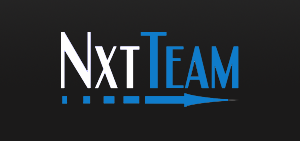Published: Wed, 08/26/15
Update Automation
- I’d like to talk a little bit about automation processes in general before we jump into Drop Guard, if that’s okay. What types of things are we talking about updating? Server configuration? Drupal projects? Deployment?
- What are some of the technologies you were using before developing Drop Guard? Maybe the underlying pieces that make up the Drop Guard architecture.
Drop Guard
- What is Drop Guard?
- Simply put, Drop Guard is a service to automate Drupal updates with seamless integration into development and deployment processes. Drop Guard helps Drupal shops and other Drupal support and service providers to automate their update work. In case of critical security updates Drop Guard will update the site automatically within 1 hour. This makes the operation of a site more secure and reliable and makes Drupal updates a full part of the development process.
- You said it’s “integration into development and deployment workflows.” What do you mean by that?
- Drop Guard works simply as a dedicated team member that is responsible for applying updates in the development as well as in the maintenance and support life-cycle of a project. You can configure Drop Guard to work with any hosting provider and with any team workflow. Drop Guard can execute different Rules-Based commands to trigger deployment actions just as a real team member would do it on manual update work.
- How granular can you get with updates? Security only? All updates?
- How does Drop Guard actually work? Is there a module to install? Server setup?
- What happens if a bug is introduced with an automatic update? Is there a process to notify the developer?
- Who is Drop Guard designed to be used by?
- Drop Guard is designed to help Drupal agencies and freelancers to deliver Drupal update services automatically. Every Drupal shop can use Drop Guard as a white label service to deliver update services to their clients as part of support contracts. For end users that don’t understand the processes behind deployment and developement deeply enough, the service is too complex but Drupal shops will definitely benefit from additional developer time that they can save for their project business.
- What prompted you to start building the Drop Guard service? And when was that?
- We started with the base technology in 2012 to build a system for our internal support contracts. We had the need to automate recurring things and ensure that our SLAs for security patches are processed reliably. When Drupalgeddon shocked the Drupal world and many sites had to be patched in a very short period of time, we already had the benefit of automated updates for our supported projects. At this point I realized that the system might have a benefit for other Drupal shops. So Drop Guard has its birthday with Drupalgeddon :-)
- Do you have any insights of the roadmap of Drop Guard?
- Sure! Currently we are in an internal Beta phase. That means we harden the service with some trusted users and we will add more beta users each week till the end of September.Then we will open Drop Guard for a public Beta version where everybody that is interested can start using the service with the help of our support team. I am sure that there are many usability issues we will face as the high flexibility results in a more complex configuration processes. But thanks to our current beta users we were able to address and fix many of them till now. Also the Feedback from Drupalcon Barcelona visitors will be an important milestone for us.
- Does this work with all hosting providers? (VPS, Pantheon, Platform.sh, Acquia cloud etc.)
- What does the pricing structure look like after the beta period?
- You mentioned there’s an incentive for people to get involved with the beta now. Do you want to talk about that?


